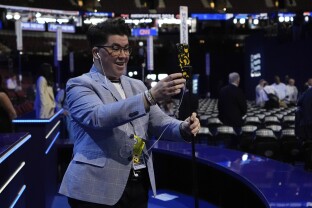CHICAGO — Just before the Democratic National Convention’s roll call vote — a light show hosted by a DJ and streamed vertically on TikTok — a photographer with a 110-year-old camera came over the loudspeakers and begged delegates to stand perfectly still for the oldest social media post imaginable.
“Is there a better way to do this?” asked a convention attendee to no one in particular, as everyone in the United Center stood for 20 seconds of strained, frozen silence for the process to complete. Any movement at all would blur the panoramic Official Convention Photo, the photographer Abbas Shirmohammadi warned repeatedly as he wielded a camera built in the 1910s.
That is maybe the central question of any convention when it comes to how a party communicates its values and finds new voters. That is, after all, the job of a political convention in the era of primaries that (usually) choose the nominee.
